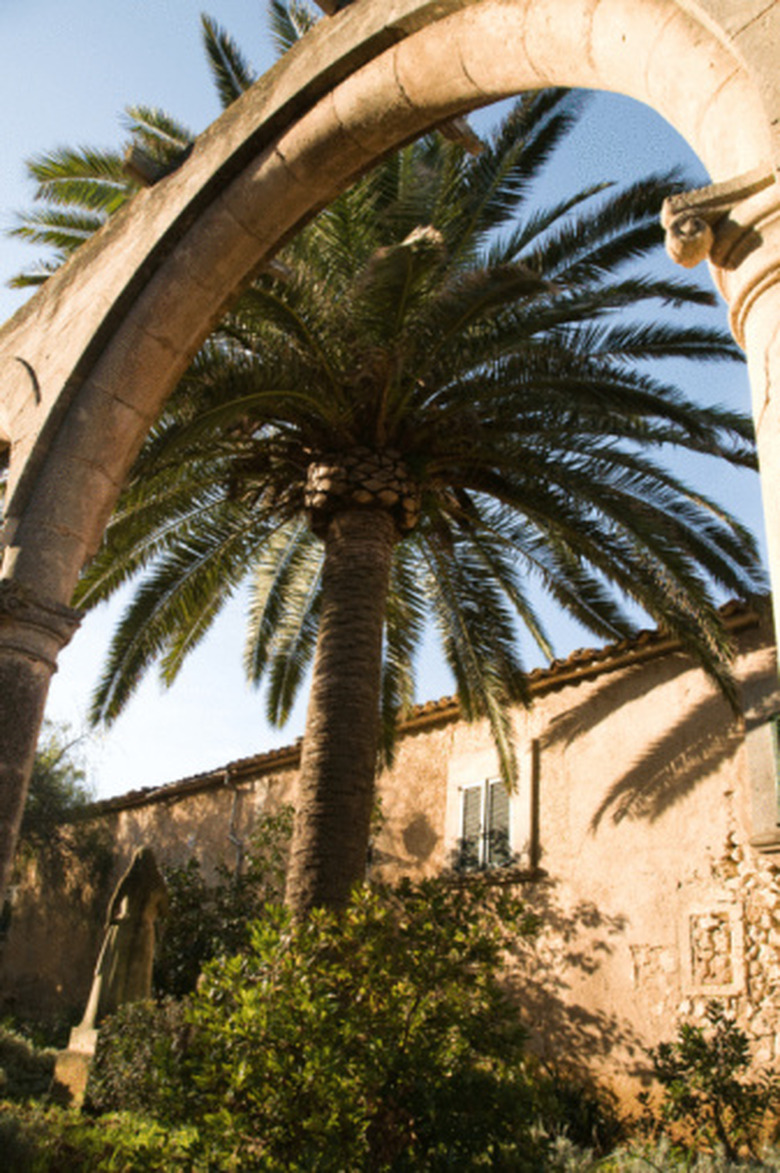4 Characteristics Of Cycads
Cycads are woody plants that have existed for 125 million years. According to Thomas Ombrello, Ph.D. of the Union County College Biology Department, botanists sometimes refer to these primitive plants as "living fossils." Cycads, which grow in tropical and subtropical regions, resemble palm trees. The sago palm is a well-known cycad that grows in yards and landscapes. Most cycads, except for the sago palm, are difficult to obtain because they propagate only by seed and are ready for transplant only after five years.
Leaves
Leaves
Cycad leaves, which resemble palm leaves, grow up to 7 feet long and emerge in a spiral around the stem. Unlike palm leaves, cycad leaves open from a tight coil and can live for four years. After the leaves die, the leaf bases dry and form a protective covering on the stem. The thick, pinnately compound leaves emerge in groups of two to 25 and mature all at once in about three weeks. Cycads are highly drought tolerant because their leaves store water.
Roots
Roots
Cycad roots have a mutually beneficial relationship with blue green algae. The large taproot sends out secondary roots that resemble coral. These coralloid roots form nodules in which blue green algae grow. Cycad roots grow up out of the soil, and the blue green algae fixes nitrogen from the air. The cycad uses the nitrogen, and the blue green algae have a safe habitat.
Seeds
Seeds
Cycads are gymnosperms, which means that they do not bear their seeds in an enclosed fruit. Cycads produce male and female cones similar to the cones of pine trees and other conifers. The female cone can grow up to several feet long and bears large red, yellow or purple seeds. As the cone matures and reveals the seeds, the bright colors attract birds and other wildlife. The animals disperse the seeds after they eat the colorful fleshy covering.
Stem
Stem
The cycad stem grows out of the taproot. Dr. Ombrello of Union County College notes that it can be difficult to distinguish the stem from the taproot. The stem is thick and fibrous and may resemble a tree trunk. Cycad stems, which store starches, are a food source for some people. The Seminole Native Americans in Florida used the starch from a native cycad, Zamia floridana, as a flour substitute.
